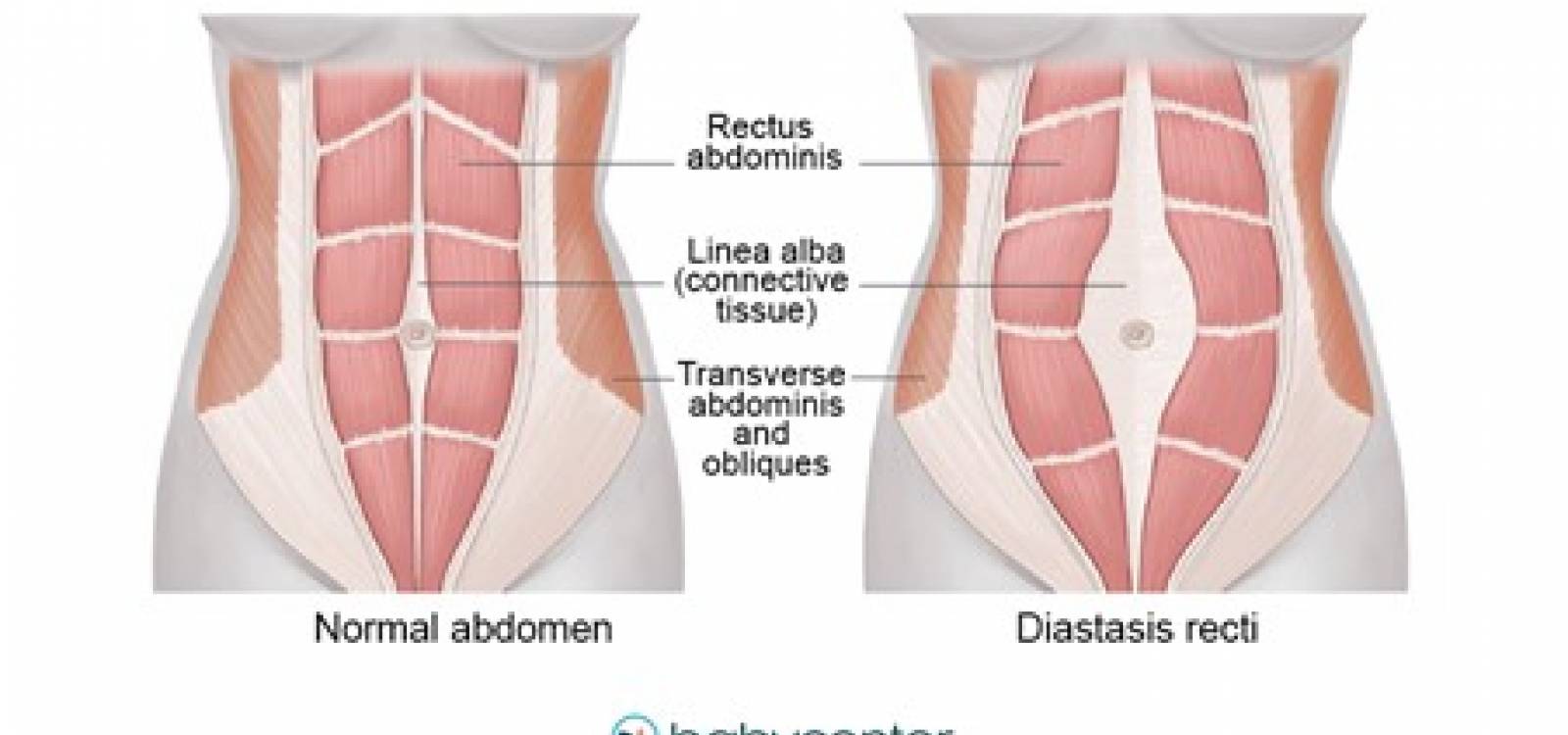What is Diastasis Recti
This is a term describing the separation of the abdominal muscles. The abdominal muscles consist of the rectus abdominis, the deeper transversus abdominis, and then the internal and external oblique muscles. During pregnancy, the muscles need to separate to ensure the baby has room to grow. As the pregnancy comes to a conclusion, the muscles will remain separated for a few weeks and with natural progression, they will come back together and a solid and continuous membrane will reform connecting the rectus muscles. The condition can also occur in men through chronic changes in breathing patterns, weight gain and age which can also cause a separation.
The rectus muscles are important for normal function: Sitting up from laying down; rolling over; lifting the pelvis up; transferring weight; reaching; doing a push up; laughing; crying; forced breathing, the list goes on and on. For some women, the muscles never fully reconnect and they are left with a continuous separation which can cause a great degree of distress and on occasions discomfort.
Addressing the separation is always on the mind of women post-partum. It is essential that they get their abdominal and pelvic floor muscles back to full function to ensure they have the necessary muscle strength and for the prevention of urge and stress incontinence. It is also important so that they can have a healthy sex life and feel confident in their bodies. Weak muscles can have far-reaching ramifications physically and mentally through the loss of what were normal activities due to the lack of confidence in the abdominal and pelvic floor muscles.
DONT START EXERCISING UNLESS UNDER INSTRUCTION!! Doing normal exercises or sit up routines can result in a worsening of the gap. Overexertion can result in the muscles contracting and pulling the opening wider or certainly not closing the gap. Seeing a Pelvic Floor Therapist is essential and can guide you through the necessary treatment including the right exercises for You.
What to expect
We will take a comprehensive history and examination including any problems incurred through pregnancy and any actions taken to resolve the condition so far. The examination will consist of postural analysis, testing the strength of the core muscles, and measuring your gapping. There is no need to undress but wear clothing that allows exposure of the abdomen. Treatment will begin immediately as we will often start the assessment of the separation by asking you to contract the pelvic floor muscles and the deeper transversus muscles. This often has a positive effect on the abdominals and it is important to see if you can contract these.
A treatment plan will be established in the first session and we will provide you with simple exercises to ensure you can remember the format of the technique and the correct delivery of it. Our goal is to make you an expert in your own condition so that you can master the exercises and feel confident in what you are doing. Our aim is to get you comfortably back to your pre-pregnancy activity.
If you are in any doubt as to whether we can help, please contact us to discuss and we will advise accordingly.











